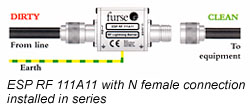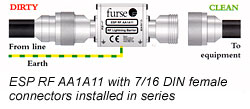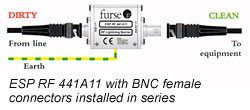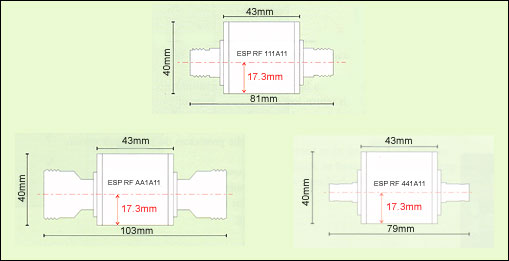| Home › Lightning & Surges Protection › Electronic Systems Protection |
|
|
|
|
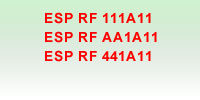
|

|
|
For coaxial (or twisted pair) CCTV lines use the ESP CCTV models. For coaxial ethernet lines use the ESP Thin/ThickNet models and for CATV systems using the F connector the ESP CATV/F. Application Use on coaxial cables to protect RF transmitter and receiver systems, including electronics located at the antenna or dish. Typical examples include cell sites, military communications, satellite earth stations, pager systems and emergency services communications systems. Features and benefits |
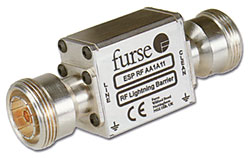 |
|||||||||||||||||||||||||||
|
Installation In a building, connect in series with the coaxial cable near where it enters or leaves the structure, or close to the equipment being protected. This should be close to the system's earth star point (to enable a good connection to earth). On a mast, connect in series with the coaxial cable near the antenna /dish being protected. Install in a radio communications room, an existing cabinet or suitable enclosure. Suitable Accessories Additional mounting plates - ESP RF BK1 (straight) and ESP RF BK2 (90deg angled) - are available.
ESP RF DC Brochure |
| Electrical Specification |
|
| Transient Specification |
|
| 1 The maximum transient voltage let-through the protector
throughout the test (+/-10%). Response time <10ns. This let-through voltage
represents a deviation from the applied signal voltage , present at the
time of the test. 2 Tested with 8/20µs waveshape to ITU (formely CCITT), BS 6651:1999 Appendix C. |
| Mechanical Specification |
ESP RF DC Brochure |

